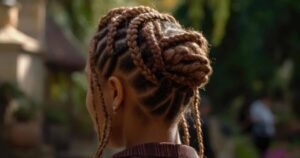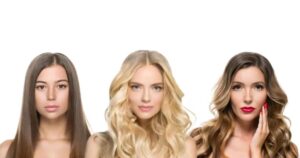Texturizing short hair can add depth, volume, and dimension to your hairstyle, creating a fresh and modern look. Whether you have a pixie cut or a bob, this technique can transform your hair by adding movement and texture. In this guide, we will explore the best methods for texturizing short hair and provide you with step-by-step instructions to achieve the desired result.
We will also address common questions about texturizing short hair and offer expert advice from professionals in the field. By following our comprehensive tips and techniques, you will be able to confidently texturize your short hair and create a stylish and personalized look.
Key Takeaways
- Point cutting, razor cutting, and thinning shears are effective methods for texturizing short hair.
- It is important to consider hair type and texture when choosing the right products and tools for texturizing short hair.
- The steps to texturize short hair include sectioning the hair, using texturizing shears, focusing on areas that need volume or definition, and constantly evaluating the results.
- Seeking consultation with a professional stylist and regularly maintaining the textured look is essential for achieving the desired results with short hair.
Best Methods for Texturizing Hair
To achieve the best results when texturizing short hair, it is essential to employ effective and professional methods. One of the most commonly used methods is point cutting. This technique involves using the tips of the scissors to create texture and movement within the hair. By cutting into the hair at different angles, stylists can create soft, wispy ends that add dimension to the overall look Locs on Short Hair.
Another effective method is razor cutting. This technique involves using a razor tool to remove bulk and create texture. By gently gliding the razor through the hair, stylists can achieve a softer and more natural look. The use of thinning shears can also be beneficial in texturizing short hair. These specialized scissors have teeth that remove bulk without sacrificing too much length. Overall, a combination of these methods can help create the desired texture and style for short hair.
Things You Should Know

When texturizing short hair, it is important to have a thorough understanding of certain key factors. Firstly, it is crucial to consider the hair type and texture. Different hair types require different techniques and products to achieve the desired texture. Fine hair may need lighter texturizing products to avoid weighing it down, while thick hair may require stronger products for better results.
Secondly, it is essential to have the right tools at hand. Texturizing shears, razors, or thinning scissors can help create the desired texture and remove bulk. Lastly, it is important to consult with a professional stylist who has experience in texturizing short hair. They can provide expert advice tailored to your specific hair needs and help you achieve the desired outcome. By understanding these key factors, you can ensure successful texturizing of short hair.
Steps to Texturize Short Hair
To achieve a textured look for short hair, begin by sectioning the hair into small parts. This will ensure that each section receives equal attention and allows for precise texturizing. Take a small section of hair and hold it between your fingers, then run a pair of texturizing shears along the length of the hair, creating small, strategic cuts.
Repeat this process throughout the entire head, focusing on areas that require more volume or definition. Remember to constantly evaluate the results as you go, ensuring that the desired texture is being achieved. Once all sections have been texturized, use your fingers to tousle and shape the hair to further enhance the texture. Now, let’s move on to expert Q&A on texturizing short hair.
Expert Q&A on Texturizing Short Hair

An expert in hairstyling techniques shares valuable insights on texturizing short hair. Here are three key takeaways from the expert’s Q&A:
- Importance of Consultation: According to the expert, a thorough consultation with a professional stylist is crucial before texturizing short hair. This allows the stylist to understand the client’s hair type, desired look, and lifestyle, ensuring the best texturizing technique is chosen.
- Techniques for Texturizing: The expert suggests various techniques for texturizing short hair, such as point cutting, razor cutting, and using texturizing shears. Each technique creates a different effect, offering versatility and movement to the hair.
- Maintenance and Styling Tips: The expert emphasizes the importance of regular maintenance to keep the textured look intact. They recommend using suitable styling products, such as texturizing sprays or pomades, to enhance and define the texture.
References for Texturizing Short Hair
One key aspect to consider when texturizing short hair is seeking references from experienced hairstylists. Consulting with professionals who have expertise in texturizing short hair can provide valuable insights and ideas for achieving the desired look. These references can serve as a source of inspiration, helping individuals understand the different techniques and styles that can be applied to their specific hair type and length.
References can also provide guidance on the best products and tools to use for texturizing short hair, ensuring optimal results. By studying and gathering references, individuals can gain a better understanding of the possibilities and limitations of texturizing short hair, enabling them to make informed decisions and achieve the desired texture and style.
| Pros of Seeking References | Cons of Seeking References |
|---|---|
| Provides inspiration | May limit creativity |
| Offers guidance on techniques and styles | May not suit an individual’s specific hair type |
| Recommends suitable products and tools | May not align with personal preferences |
| Helps make informed decisions | May not achieve the desired texture and style |
| Enables realistic expectations | May require additional research for customization |
Before You Start Texturizing
Prior to beginning the process of texturizing short hair, it is essential to prepare and consider certain factors. These factors will not only ensure that you achieve the desired results but also help protect the health and integrity of your hair. Here are three important considerations:
Hair type: Understanding your hair type is crucial as it will determine the techniques and products you use for texturizing. Fine hair may require different methods than thick or curly hair.
Hair condition: The health of your hair plays a significant role in the texturizing process. If your hair is damaged or weak, it is advisable to consult a professional hairstylist before attempting any texturizing techniques.
Desired outcome: Clearly define the texture you want to achieve. Whether it’s adding volume, creating movement, or enhancing natural curls, having a clear vision will guide your texturizing decisions.
Achieving a Textured Look With Different Hair Types
To successfully achieve a textured look with different hair types, it is important to understand how to adapt texturizing techniques based on individual hair characteristics and desired outcomes. Different hair types require different approaches to achieve the desired texture. For example, fine hair may require lighter texturizing techniques to avoid weighing it down, while thick hair may need more aggressive techniques to create a texture that will hold.
Curly hair can benefit from techniques that enhance natural curl definition, such as twist-outs or finger coils. On the other hand, straight hair can be texturized Short Hair can use techniques like razoring or point cutting to add movement and dimension. By understanding the unique qualities of each hair type, it becomes easier to achieve a textured look that suits individual preferences.
| Hair Type | Recommended Techniques | Desired Outcome |
|---|---|---|
| Fine Hair | Light texturizing techniques | Avoid weighing down the hair |
| Thick Hair | Aggressive texturizing techniques | Create a texture that will hold |
| Curly Hair | Twist-outs, finger coils | Enhance natural curl definition |
| Straight Hair | Razoring, point cutting | Add movement and dimension |
FAQs
Conclusion
In conclusion, texturizing short hair can be achieved through various methods and requires careful consideration of the individual’s hair type. By following the expert advice and step-by-step instructions provided, one can successfully achieve a textured look. Remember to be mindful of the tools and techniques used, and always consult references for further guidance. With these tips, you can transform your short hair into a beautifully textured masterpiece.








